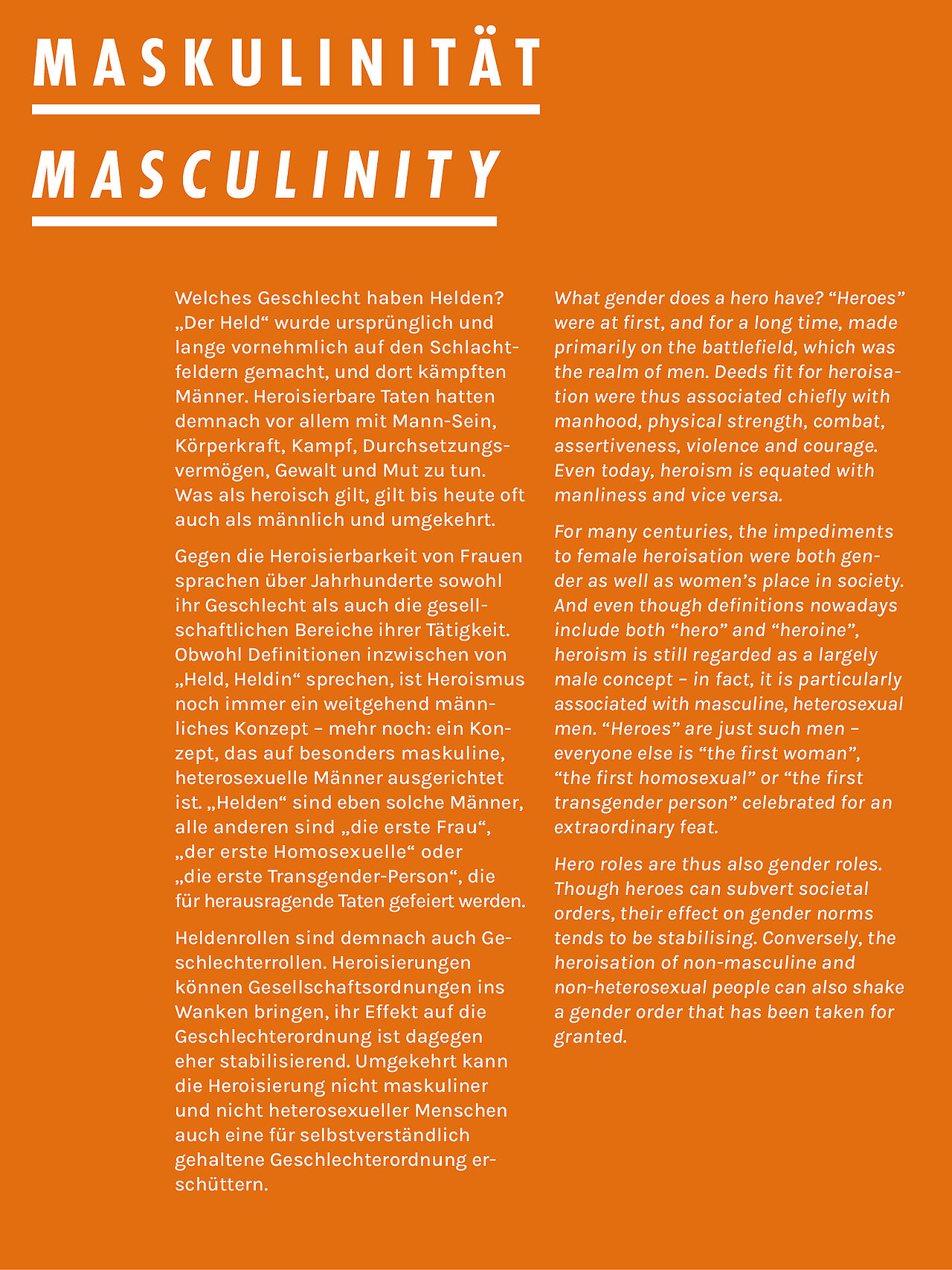
Essay
Heroic Physique – The Farnese Hercules
Ever since heroes were depicted as naked, athletic men in antiquity, European audiences have associated heroism with masculinity. However, a masculine body does not make a hero.
Ancient heroes were complex, contradictory characters. Depictions of pain, prudence or exhaustion also reveal a sense of suffering and confusion, which evoked empathetic closeness and identification in contemporary observers. Throughout the history of reception, this nuanced interpretation gradually simplified to the purely aesthetic idea that a muscular male body is to be considered the ideal of heroism.
Voices of the SFB 948
Heroic Physique – The Farnese Hercules by Ralf von den Hoff
Catherine the Great Emperor - Heroisation and Masculinity
Outstanding female figures are often heroised through masculinisation: their womanhood is concealed they are attributed with characteristics that are generally regarded as masculine and, for example, are associated with the military sphere, which is commonly read as masculine. The result is an adjustment to a masculine perceived standard.
Women who heroise themselves in this manner reinforce the traditional gender order as they confirm the rule (largely defined by men) by being the exception. They thus affirm the mostly unaddressed automatism that heroes are conceived of as males.
Voices of the SFB 948
Catherine the Great Emperor by Andreas Plackinger
Politics with an unbuttoned shirt – Martyrs and Machos
The media staging of a partially uncovered male torso can have a heroising effect if it is able to illustrate aspects such as (potential) dynamism, health and physical strength.
The motif of the unbuttoned shirt is an option of visual heroisation only for men (and not for every man). This raises the question of the extent to which ideas of the heroic are involuntarily linked to masculinity.
Voices of the SFB 948
Politics with an Unbuttoned Shirt by Andreas Plackinger
Polar Masculinities - Fridtjof Nansen
The successful struggle against the force of nature is a typical prerequisite for the creation of male heroes. The masculine, assertive hero subdues nature, which is often equated with conquering a woman.
Masculinity is a determining property of the polar heroes around 1900 who became national heroes. This concept of a hero includes the notion that he is particularly male and heterosexual. Even today, the heroisation as a national hero seems irreconcilable with homosexuality.
Voices of the SFB 948
Polar Masculinities – Fridtjof Nansen by Joachim Grage
War as a Heroic Realm – Female War Photographers
Violence, heroism and masculinity have been associated with each other for a long time and attributed to the nature of men. In the context of wars and the violence of war, it is more difficult for women to become heroised. This is true even for female soldiers.
Like their male colleagues, female war photographers personify heroic qualities and professional standards. They, too, represent the willingness to take risks, independence and truth. They develop heroic potential from their gender-specific exclusion from the military as a male association and their supposed special sensitivity: female war photographers are considered to be less corruptible and thus more credible.
Voices of the SFB 948
War as a Heroic Realm - Female War Photographers by Vera Marstaller
